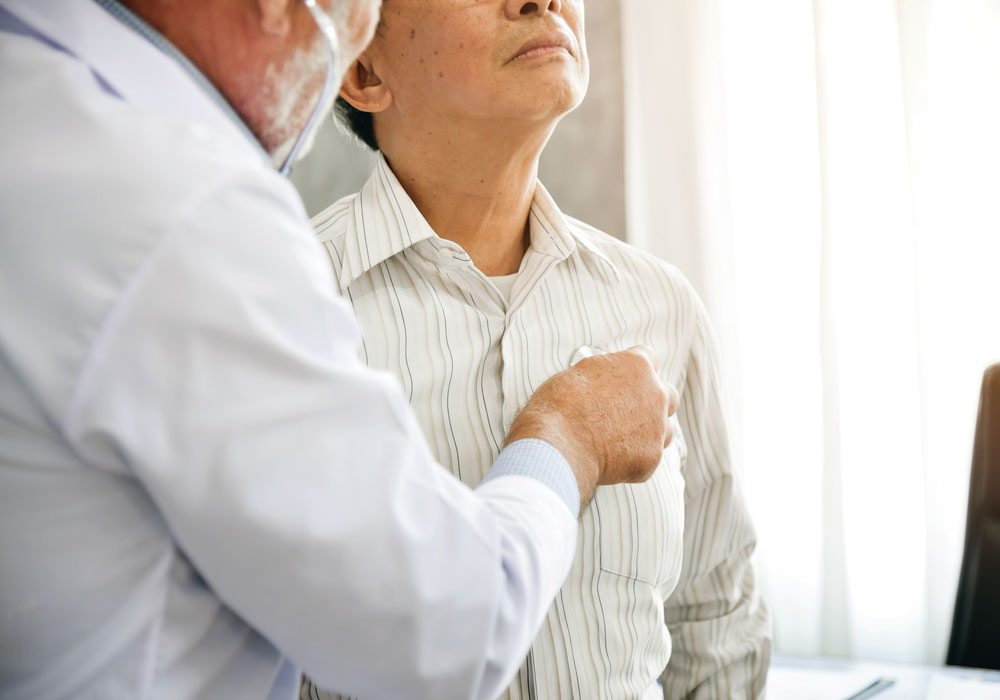Cancer is second only to heart disease as the leading cause of death in the United States. But heart conditions overlap with cancer in more ways than mortality. Chemotherapy, immunotherapy, radiation, and the myriad medication combinations used in cancer can lead to various complications, including cardiotoxic side effects. Because of the prevalence of heart disease, many patients with cancer also present with pre-existing cardiac comorbidities.

A Complex Program for Complex Patients
To answer the need for dedicated management of cardiac effects in patients with cancer, the Yale School of Nursing and Yale New Haven Hospital Department of Cardiology developed a cardio-oncology program, bringing together experts in two specialties to protect patients and keep them on track during their treatment journey.
“It’s a comprehensive, referral-based program, and our primary goal for our patients with cancer is to keep them safe during the process of chemotherapy and radiation,” Jessica Coviello, DNP, APRN, ANP-BC, associate professor at Yale School of Nursing and nurse practitioner for Yale’s cardio-oncology program, said.
With all the factors of oncology and cardiology in play, the workload is challenging for providers to address. The program helps them monitor patients’ pre-existing heart conditions or watch for development of new conditions such as heart failure.
“The complexity really is in looking at the multisystem issues, comorbidities, previous treatments, and individual cardiovascular risk factors. All of those elements come into play when looking at how to design interventions for folks going through therapy,” Coviello said. “We know that specific drug categories provide specific risk factors, and we need to be aware of what the potential problems might be. With new drugs and clinical trials coming out every week, we're looking up new drugs, what the side effects might be, and designing surveillance based on that.”
For Coviello’s team, ensuring patients have resources, guidance, and clinical follow-up throughout survivorship is key.
“We work with our patients as they move into stable survivorship, with secondary prevention efforts, and help to make sure that they stay healthy and lead a healthy lifestyle,” Coviello said. “We’ll continue monitoring patients for years after they've reached remission, looking at their cardiac status and running surveillance on their overall cardiovascular risk.”
Cardio-oncology programs are forging new ground for patient safety and care. Coviello said that no practice standards are currently established for cardio-oncology, so providers are constantly examining the best available research and resources to ensure evidence-based practice is being followed.
The Growing Demand for Cardio-Oncology
New cardio-oncology programs are needed throughout the country, and oncology nurses can be part of that work.
“Although we’re all members of the cardiology department, nurses with an oncology background could be trained to work within the cardiology specialization as the demand from this particular patient population grows,” Coviello said. “But to get a sense of that work, I’d recommend for any nurses—regardless of background—to shadow in a cardio-oncology program.”
Not all health systems have the resources for a stand-alone cardio-oncology program, so Coviello said that all oncology nurses have an important role in watching for cardiotoxicity from cancer therapy.
“Knowing that chemotherapy agents like anthracycline and treatments like anti-PD1 monoclonal antibodies can lead to acute cardiac events—and being prepared to support patients—can mean all the difference in terms of survival and outcome,” Coviello stressed. “Nurses are at the forefront of that work and are crucial to patients in the cardio-oncology setting.”






